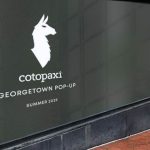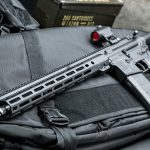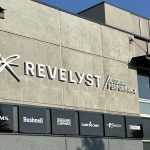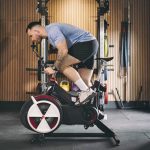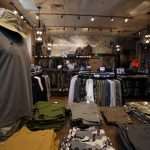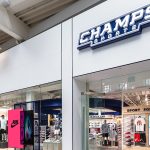adidas Group saw decent top-line growth in the first quarter, boosted by gains at the adidas brand and an additional month of reporting for the Reebok business. However, the bottom line was hurt by higher operating expenses, a slightly higher tax rate, and increased net financial expenses resulting from lower financial income that reflected a strong decline in the companys cash position compared to the start of the first quarter last year. Margins improved for all segments and the consolidated company, which helped offset some of the impact of the higher operating expenses for the period.
While currency-neutral revenues increased 9% when including the full quarter for the Reebok segment versus just two months last year, the increase also included the loss of the Greg Norman Collection business that was sold to MacGregor last year. Excluding the GNC impact and accounting for the extra month this year, like-for-like currency-neutral revenues would have still been up 4% for the period.
At Brand adidas, total sales in euro terms increased 2.4% to 1.82 billion in the first quarter of 2007 from 1.78 billion in Q1 2006, but improved 7% when excluding the FX rate impact from the stronger Euro against other currencies. Owned-retail again played a big role in the increase, growing 28.3% (+36% currency-neutral) for the period to 254 million, or 14.0% of adidas brand revenues, from 198 million, or 11.3% of brand revenues, in the year-ago period. The owned-retail increase was driven by double-digit comparable store sales increases as well as the addition of new stores.
Brand adidas revenues would have dipped 0.8% in Euro terms excluding the owned-retail business, which would be compared to the 14.9% increase produced in the first quarter last year.
Sport Performance category sales decelerated from the year-ago double-digit growth rate, posting a 9% increase in currency-neutral terms, driven by growth in footwear and apparel. In Euro terms, Sport Performance sales were up 3.5% to 1.39 billion ($1.82 bn) in the quarter, compared to 1.34 billion ($1.61 bn) in the year-ago period.
adidas has combined its Sport Heritage and Sport Style divisions into one Sport Style segment going forward. Sales in the new division were down 1.2% for the quarter to 421 million ($552 mm) from 426 million ($512 mm) in Q1 last year. The increase was said to be driven by gains in both footwear and apparel. Currency-neutral sales were up roughly 3% for the period.
Herbert Hainer, chairman and CEO of adidas Group, told analysts that the running category was growing at double-digit rates this year. He said basketball apparel, which presumably includes the NBA product that was transferred over from Reebok last year, was up nearly 100%, driven by gains in both the U.S. and Canada.
On a regional basis, brand adidas currency-neutral sales were up 6% in Europe, increasing 3.4% in Euro terms to 936 million ($1.23 bn) from 905 million ($1.01 bn) in the year-ago period. Strong growth in the regions emerging markets and Iberia was said to be offset in part by declines in the U.K. and Germany. Hainer also called out “strong surges” in running and training for the region.
In North America, brand adidas sales declined 7.4% in Euro terms to 337 million ($442 mm) from 364 million ($438 mm) in Q1 last year, reflecting a 0.9% increase in U.S. Dollar terms, after posting growth in excess of 30% last year. “Big strides” in performance apparel categories, such as basketball, football (soccer) and tennis were key contributors, more than offsetting “sluggish” footwear sales in basketball and “consolidation” within the brands Originals product after several years of double-digit growth.
Asia/Pacific currency-neutral sales were up 11% for Q1, and increased 3.9% in Euros to 395 million ($518 mm), led by double-digit increases in all markets except Japan. Even without the World Cup boosting sales, Latin America is posting solid gains, with regional sales jumping 32% in currency-neutral terms on top of a 42% increase in the year-ago period. Sales increased 21.6% in Euros to 135 million ($177 mm).
Brand adidas gross margin improved 60 basis points 47.2% of sales. Management pointed to cost synergies with Reebok as a driver here, as well as an improved product mix and an increased contribution from owned-retail. Operating profits for brand adidas declined 3.2% to 270 million ($354 mm) from 279 million ($336 mm) in the prior year quarter.
Based on current backlog figures (see chart below), and continued growth with owned retail, brand adidas expects to see currency-neutral sales increase in the mid-single-digits for the full year.
Reebok segment revenues increased 22% on a currency-neutral basis, due primarily to the reporting of a full quarter versus just two months last year. adidas Group closed its acquisition of Reebok at the end of January 2006. Reeboks numbers last year also included the NBA and Liverpool licensed businesses, which were later transferred to the adidas brand. As a plus for this year, the GNC owned-retail business, whish was excluded from the sale of the Greg Norman business, are now reported in the Reebok owned-retail numbers. The brand is still experiencing a tough road in the U.S. and the U.K., Reeboks two largest markets, but trends are clearly starting to improve. On a like-for-like basis, excluding all the factors above, Reebok currency-neutral sales were down 5% for the first quarter.
Comp period sales for the Reebok segment declined in North America, but increased in Europe, Asia, and Latin America.
Reebok brand sales were $560 million for the quarter, representing a 21% increase on a currency-neutral basis, or a 25% increase in U.S. Dollar terms compared to $447 million in Q1 last year. On a like-for-like basis, sales decreased due to declines in lifestyle product and all major sports categories. Rockport brand revenues increased 25% to $90 million for the quarter versus $72 million in the year-ago period, representing a 23% increase in currency-neutral terms. However, the brand saw a decline on a comparable basis due to the “absence of major product launches.” Reebok-CCM Hockey, which includes the Reebok Hockey, CCM, JOFA, and KOHO brands, were up nearly 39% in U.S. Dollar terms to $37 million in Q1 from $26 million in Q1 last year, reflecting a 37% increase on a currency-neutral basis. Management said that sales here also decreased for the quarter on a comp basis due to the absence of any major product launches.
Reebok segment gross margins were up 110 basis points for the period to 36.8% of sales, due primarily to last years Q1 accounting effects of 22 million related to the purchase price allocation for the acquisition. Reported GM for Q1 last year was 35.7% of sales, but would have been 40.5% of sales excluding the accounting effects, so comp gross margins apparently declined 370 basis points for the quarter.
Reebok brand backlogs saw their first positive performance since the acquisition closed, increasing 3% on a currency-neutral basis at the end of the quarter. The order book does not erase the 14% currency-neutral decline for the same period last year, but it starts to cut into the negative trend. A 9% currency-neutral decline in Footwear was said to be due mainly to declines in North America and Europe, while the 16% currency-neutral increase in apparel got a lift from North America and Asia. A new NHL hockey jersey for this fall was a key contributor to the N.A. strength.
Reebok segment full year sales are expected to grow at low-single-digit rates versus last year.
Revenues at TaylorMade-adidas Golf decreased 4% on a currency-neutral basis for the period, reversing a strong double-digit positive trend, and declined about 2.4% when measured in U.S. dollars. The decrease was due entirely to the divesture of the Greg Norman Collection business, which was responsible for about $19 million (16 mm) in sales in Q1 last year. Excluding the GNC impact, which was apparently isolated to the North America business, TM-aG revenues would have been up 6% for the period to $236 million (180 mm) from $223 million (185 mm) in the year-ago period, or up 5% on a currency-neutral basis.
North America sales were down 11% when measured in U.S. Dollars to $131 million (100 mm), compared to $147 million (122 mm) in Q1 last year, due to the GNC divesture. The company said the region would have been otherwise positive for the quarter. Europe sales swung positive again in the first quarter, increasing roughly 4.3% in Euro terms to 24 million ($31 mm) after declining 15% last year to 23 million ($28 mm) versus the previous year period. Asia/Pacific sales were up 11% in U.S. Dollars to $72 million (55 mm) from $65 million (54 mm) in the year-ago period. Latin America sales were up 9% to $1.3 million (1 mm) when measured in U.S. Dollars.
The company expects TM-aG full year currency-neutral sales to increase in mid-single-digits on a like-for-like basis, but sales will decline on a reported basis due to the GNC divesture.
| adidas Group | ||||||
| First Quarter Results | ||||||
| (in $ millions) | First Quarter | |||||
| 2007 | US $** | 2006 | US $** | Chg | C-N Chg* | |
| Total Sales | 2,538 | $3,326 | 2,459 | $2,957 | 3.2% | 9% |
| adidas | 1,819 | $2,384 | 1,776 | $2,136 | 2.4% | 7% |
| Reebok | 524 | $687 | 454 | $546 | 15.4% | 22% |
| TM-aG | 180 | $236 | 201 | $242 | -10.4% | -4% |
| Gross Margin | 46.8% | 45.0% | +180 bps | |||
| Net Income | 128 | $168 | 144 | $173 | -11.1% | n/a |
| Diluted EPS | 0.60 | $0.79 | 0.67 | $0.81 | -10.4% | n/a |



